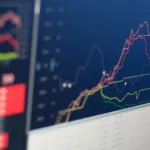By becoming a member of our site, you can add the content you like to your favorites, and present the content you have produced or liked on the internet to our site visitors with the send content option.
Zaten bir üyeliğiniz mevcut mu ? Giriş yapın
By becoming a member of our site, you can add the content you like to your favorites, and present the content you have produced or liked on the internet to our site visitors with the send content option.
You Can Benefit from All Options Exclusive to Our Members by Registering

Next Content:
Ethereum Euphoria: ETC Airdrop Mastery
- Home Page
- #AlgorithmicTrading
- Algorithmic Trading Demystified
Algorithmic Trading Demystified

Algorithmic trading has become increasingly prevalent in financial markets, revolutionizing the way trades are executed and strategies are implemented. By leveraging complex mathematical models and automated processes, algorithmic trading seeks to optimize trading decisions and minimize human error.
At its core, algorithmic trading involves the use of algorithms to execute trades based on predefined criteria and parameters. These algorithms analyze vast amounts of data, including market trends, price movements, and trading volumes, to identify profitable opportunities in real-time.
One of the key advantages of algorithmic trading is its ability to execute trades at high speeds and frequencies, allowing traders to capitalize on fleeting market opportunities. By removing human emotions and biases from the trading process, algorithmic trading aims to improve efficiency and consistency in decision-making.
Moreover, algorithmic trading enables traders to implement complex strategies that would be impractical or impossible to execute manually. Strategies such as statistical arbitrage, trend following, and mean reversion can be automated and executed with precision, enhancing trading performance and risk management.
However, algorithmic trading is not without its challenges and risks. Technical glitches, system failures, and market anomalies can lead to unexpected losses and disruptions in trading operations. Additionally, concerns about market manipulation and unfair advantages for high-frequency traders have prompted regulatory scrutiny and oversight.
As algorithmic trading continues to evolve, it is essential for traders to stay informed about the latest developments and best practices in the field. By understanding the principles and mechanics of algorithmic trading, traders can make informed decisions and harness its potential to enhance their trading strategies and performance.
In conclusion, algorithmic trading demystifies the complexities of financial markets by applying computational techniques and automation to trading activities. While it offers significant opportunities for efficiency and profitability, algorithmic trading requires careful planning, monitoring, and risk management to navigate successfully in dynamic market environments.
We offer our respects and wish you a good reading. – Who Learns What? Team!
- On-Site Comments


























